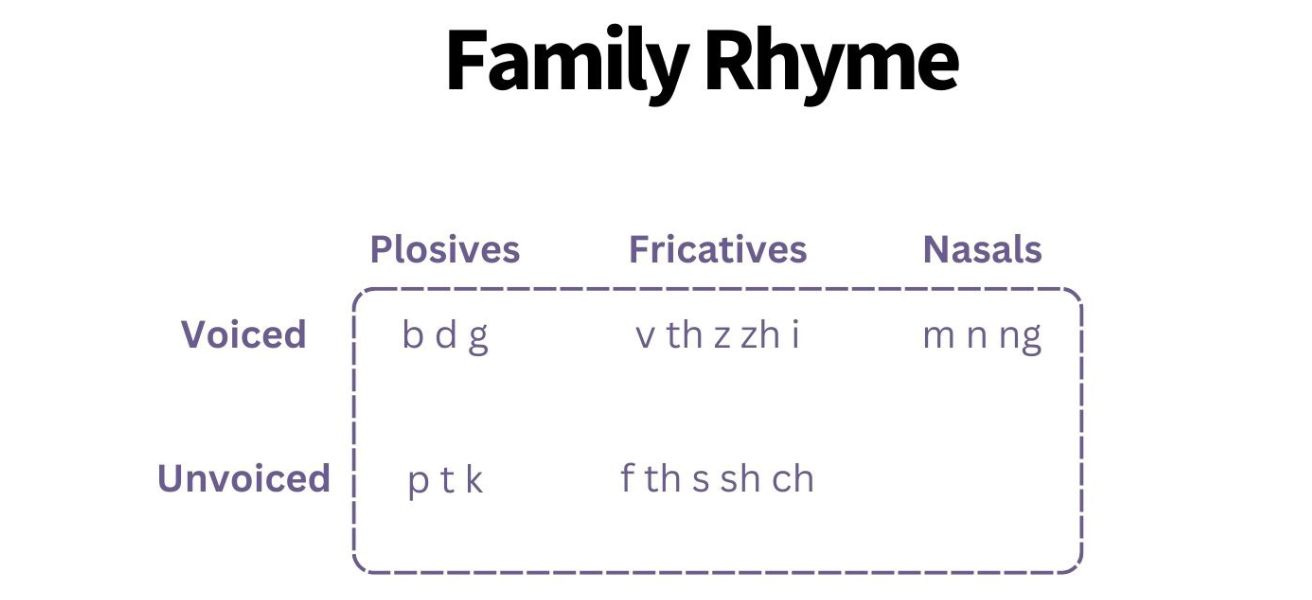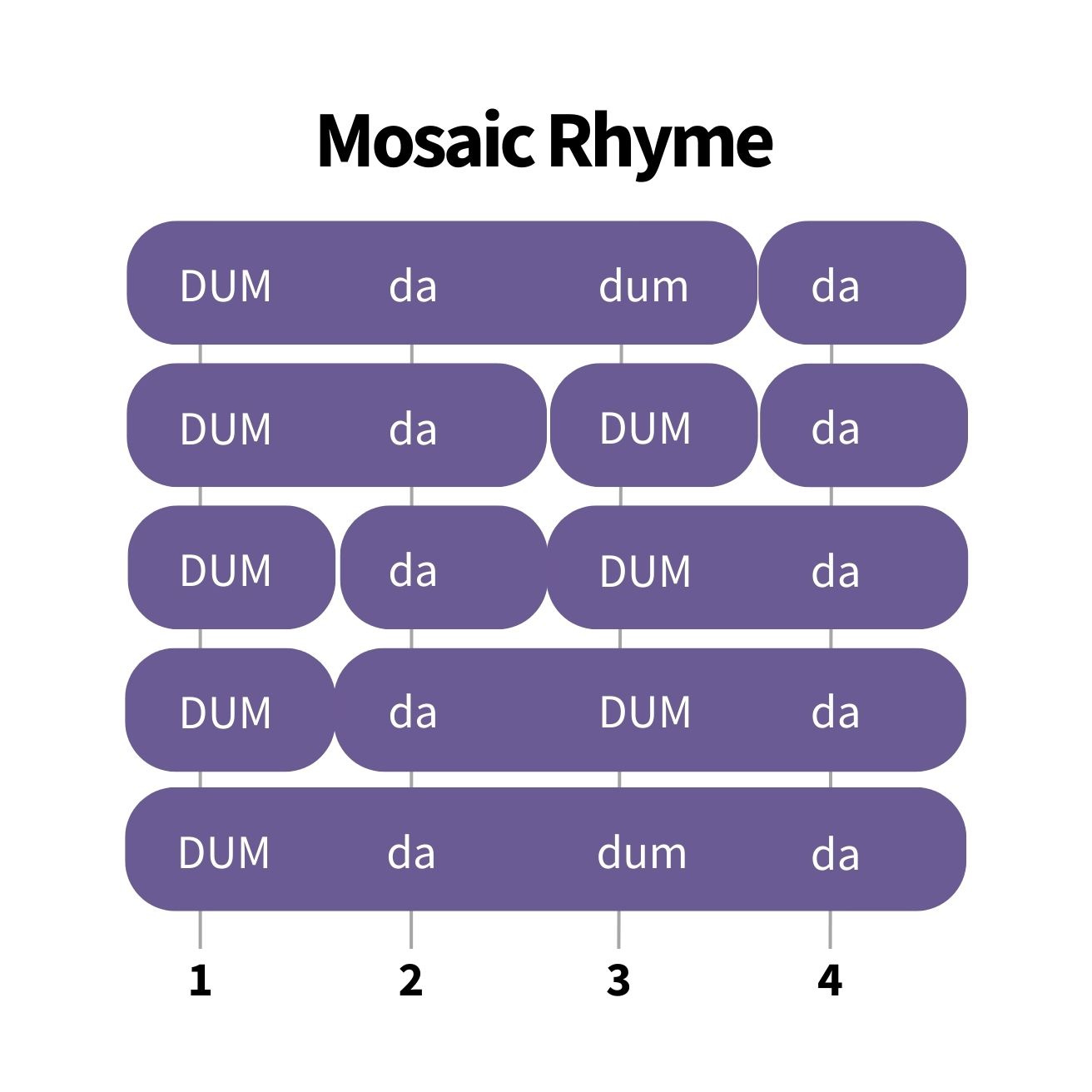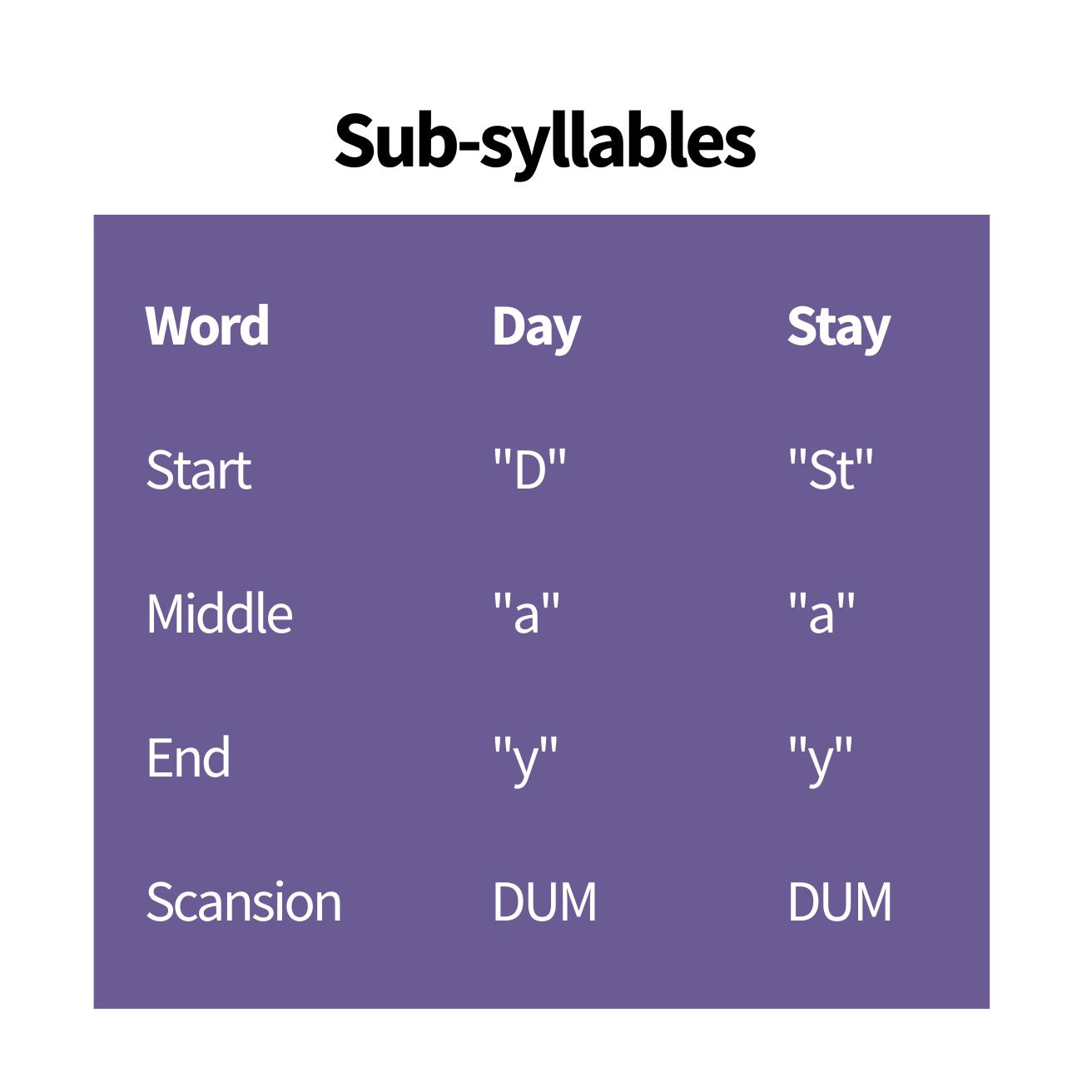When I wrote my first-ever song, I started rhyming. It was all about a long list of rhymes that sound almost the same –
Day/Stay/Bay
Enough/Stuff/Guff
And after a while, I realized I needed more options for rhymed words. Way more options because I wasn’t getting the words I needed. Especially with words like “Stuff” and “Guff”! So, having found the wonderful book, ‘Successful Lyric Writing’ by Sheila Davis, I realized there were several alternative types of rhyme, particularly:
Perfect rhyme (street/retreat)
Identities (day/today, leave/believe)
Assonance (night/strike)
Unstressed rhyme (given/heaven)
Consonance (can/men, bet/ate)
Para rhyme (loft/left, sign/scene)
Augmented (blue/gratitude, rain/stained)
Diminished (stairs/glares/dares/pears) etc.
And these are all great but, when I went to Berklee Music School’s online courses, I found Pat Pattisson’s Family Rhyme, which helped take it to another level. As my friend Andrea Stolpe says:
Family rhyme occurs when the stressed vowel sounds match exactly, and the ending consonant sound is closely linked. Family rhymes are like cousins of perfect rhymes. Some examples of family rhyme are: wet/deck; dame/grain; float/yoke; math/pass.
Brilliant stuff. This is what family rhyme looks like in a pic:
Family rhymes have been great for adding a large set of rhyme options to my songwriting. However, I still needed more, way more.
This was all unlined to me when I had one of my first ever songs critiqued by a pro songwriter in Nashville in front of 12 other young songwriters like me. One of the faculty members was able to come up with way more rhyming options than I had even thought of. The 28th draft of my overworked lyric had still missed something. What was I missing? And what, exactly, was going on in the head of this genius pro-songwriter?
So, I started to check it all out from a new viewpoint. That’s when I discovered mosaic rhyme.
Mosaic rhyme
Mosaic rhyme is when one or more syllable words are matched with different syllable words e.g. “poet” and “know it”. And in songwriting, Mosaic rhyme can take lyrics to another level by combining three elements:
Scansion
Prosody, and
Sub-syllables
It’s possible to try and rhyme with just both 1 and 2 along with simple rhymes. However, when using mosaic rhyme, using deeper level sub-syllables, there are way more words and lines to access, and closer relevant emotions, to be used in song lyrics.
How does this work?
Mosaic rhymes are not just using end-of-line words, but it helps deliver whole phrases and lines to use in your lyric.
I have already talked about scansion and prosody, but you may wonder why they are so important.
The reason is, that scansion and prosody are both fundamental to finding the right lines and rhymes for writing powerful lyrics. But when you combine them together with the third element - sub-syllables - it all starts to make sense.
Sub-syllables look at each syllable in three parts:
Starts
Middle
Ending
What does this look like?
So the first words I was trying to rhyme -
Day is split into three parts “D”, “a”, and “y”
Stay is also split into three sub-syllable parts - “St”, “a”, and “y”
When these are combined with the scansion - a “DUM” stressed overall syllable (rather than an unstressed “da”), and the prosody dictated by the music, there is a big puzzle (or mosaic) that needs to be figured out.
This is especially when you are looking to use a number of words together. This is what mosaic rhyme is all about - and coming up with some really interesting and more fun results.
Take the phrase
“Then you say”
What matches can be used with this with mosaic rhymes?
Then you say
When you stay
Blew away
There’s a way
And a million other lines out there, including on of my favorites –
Bear’st away
which is from one of Charles Wesley’s “Lamb of God”.
And here are a few things to think about:
Mosaic rhymes are not about how things are spelled: it’s what they sound like. This is important.
Any kind of rhyme can be used to match internal rhymes within a line, not just at the end of a line, from above: when/blew/there’s/bear’st.
The idea of this is not to necessarily find the most complex links from this technique: the art of writing with this is to see if it works with the emotion of the song.
The more complex the mosaic rhyme used, the more fun it can be. Many pro songwriters use this without even thinking in terms of mosaic rhymes. But they are still doing this in their lyrics.
There are many brilliant rhymes that match masculine/feminine rhymes to multiple mosaic rhymes. This is really interesting as a lyricist, bringing many options than simply looking only family rhymes. Especially in some genres, like jazz, musicals, Worship, hymns, and rap.
For example, a line like this:
“Try to find amazing lines” (DUM da DUM da DUM da DUM)
Is the agent line, which can be linked with many other lines, like:
“Thine the work, the praise is thine” (also, DUM da DUM da DUM da DUM)
The mosaic rhyme takes “Try to/Thine the”, “fine amazing/work the praise is”, and “line/thine”. Cool eh?
Question
Here are a few questions:
Are there mosaic rhymes in lyrics you’ve already written?
If not, how about trying a few lines or words that you could add to your lyrics?
How about making a list of important words you would love to use in your lyrics and see if you can find some mosaic rhyme mate lines?
Enjoy!
Simon





